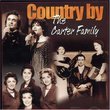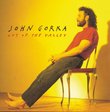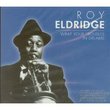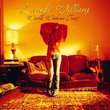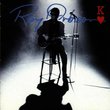| All Artists: Various Artists Title: Martin Scorsese Presents The Blues: Feel Like Going Home Members Wishing: 1 Total Copies: 0 Label: Sony Original Release Date: 9/28/2003 Re-Release Date: 9/9/2003 Album Type: Extra tracks, Soundtrack Genres: Blues, Folk, Pop, Soundtracks Styles: Delta Blues, Acoustic Blues, Modern Blues, Traditional Folk Number of Discs: 1 SwapaCD Credits: 1 UPCs: 827969048924, 082796904892 |
Search - Various Artists :: Martin Scorsese Presents The Blues: Feel Like Going Home
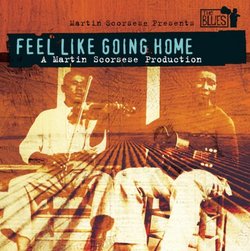 | Various Artists Martin Scorsese Presents The Blues: Feel Like Going Home Genres: Blues, Folk, Pop, Soundtracks This soundtrack is one in a series (Martin Scorsese Presents The Blues) featuring original recordings and blues classics hand picked by the director Martin Scorsese. 20 tracks from the likes of Robert Johnson, Charley Pa... more » |
Larger Image |
CD DetailsSynopsis
Album Description This soundtrack is one in a series (Martin Scorsese Presents The Blues) featuring original recordings and blues classics hand picked by the director Martin Scorsese. 20 tracks from the likes of Robert Johnson, Charley Patton, Ali Farka Toure & Lead Belly. Sony. 2003. Similar CDs
Similarly Requested CDs
|
CD ReviewsFirst in Scorcese series is off to a good start Daniel J. Hamlow | Narita, Japan | 02/22/2004 (4 out of 5 stars) "For the first soundtrack in Martin Scorcese's blues series, he selected a majority of classic country bluesRobert Johnson is featured twice here, in "Hellhound On My Trail," which makes one wonder just what demons he was fleeing from, and "Traveling Riverside Blues," which is where Led Zeppelin, (borrowed is a very nice word for what they did) the phrase "the way you squeeze my lemon..." in "Lemon Song"His traveling partner Johnny Shines is represented on "Dynaflow Blues," which is not only an example of an amplified electric blues but updates Johnson's "Terrapin Blues."Alan Lomax's discovery and interviews of Muddy Waters led to his producing "Country Blues" on the search for his woman at any cost, and "Rosalie" which is backed by the violin and mandolin of the Son Simms Four combo.The slow epic "Celebrated Walkin' Blues" by Taj Mahal has a amplified droning harmonica and slide guitar. And that's Ry Cooder on another guitar and mandolin. This is a tribute to the lives of the road-bound musicians in the Delta region.The 1927 Flood of Mississippi is covered by three artists. Son House's protagonist tells it from the POV of a enchained levee worker in "Government Fleet Blues." Charley Patton's "High Water Everywhere" was done two years after the event, and his rougher vocals and hand thumping the guitar is quite a contrast to Johnson's smoother higher-pitched vocals. But the most poignant is John Lee Hooker speaking softly of the tragedy in the acoustic guitar of "Tupelo Blues," and the wishes for deliverance among the poor people trapped by the raging waters.Son House's "My Black Mama Pt. 2" is the original of "Death Letter Blues," which can also be found on Warming By The Devil's Fire. Also on that same album is "C.C. Rider," done there by Ma Rainey, but here by Lead Belly.Of the new tracks, Willie King & The Liberators' "Terrorized" tell a sobering compact history of the African-American experience from being kidnapped from Africa for slavery, being strung from the nearest tree, and being persecuted overall. The idea is that yes, "we talk about terrorism" q.v. 11 Sept., but that's nothing compared to the terrorism African-Americans underwent for centuries.As in the film, the ties between the blues and African music are linked by three artists. In Senatobia, MS, Otha Turner and his cane flute, which sounds a lot like a fife, plays "Oh Baby" with Napoleon Strickland and the Como Drum Band, in which this form of African drumming is proof that here is one thing that makes all blacks Africans. He and Corey Harris, Scorcese's talented blues guitarist play on the gospel-themed "Lay My Burden Down," on the last thing to happen to any weary soul. And "My Babe," performed with his daughter, is presumably his last live performance before his death.On the Malian side, the acoustic blues of Ali Farka Toure, whose melodies for "Mali Dje" and "Amandrai" and albino artist Salif Keita's "Ananamin" prove that the blacks in America and Africa may be separated by differing languages, but they can communicate their feelings of suffering through music, and that a black American should not be a foreigner in Africa, because he's actually going home to his roots.Not all the songs here appeared in the movie and vice versa, which may irk people expecting a straight ahead soundtrack, but it's still a good collection."
|



